Let’s start this article by first saying that according to Lean, maintaining an ordered list of ideas (backlog) is a waste. Why is it a waste? Well, simply because having an endless pool of ideas, always trying to refine and prioritize them takes time. What if they never get implemented? The answer is clear: wasted time.
However, when working on a project, product or service, you still need to have a way to capture your ideas, including customer feedback. Otherwise, you risk accumulating high levels of disorganization and misunderstanding of what the real customer requirements are. Without a doubt, that wouldn't keep you on the right path to agility for a long time.
That’s why to eliminate chaos, at Businessmap, we collect and plan our ideas with the help of the Kanban backlog. It helps us reduce the uncertainty of the work process and provide value to customers all the time.
What Is the Purpose of the Kanban Backlog?
By definition, a project or product backlog is a visual representation of items that you may or may not deliver. On a Kanban board, the backlog "lives" on the leftmost part before the "To Do" stage (column).
Once you pull work from the Backlog to the "To Do" column, that's a signal that all the details about it are clear and you will get it done successfully (making sure it’s of high quality). Then, whenever the item goes into the "In progress" stage, that represents your commitment point to finish it with a given SLA (Service Level Agreement).
With that being said, we need to point out that the purpose of the Kanban backlog is not just to list out ideas or customer feedback. Instead, your intention should be to continuously make them more actionable in order to eventually bring them to life.
Backlog Prioritization
Inside the backlog, everything needs to be kept in a semantic order which should be achieved with as minimal effort as possible. A way to do that is by creating different levels of priority.
In case you need to collect a large pool of ideas, you can create a separate visual board to serve as your backlog. Notice that this won't be a Kanban board because there will be no flow of work there. You can just use it as a way to better visualize and prioritize rough ideas as well as customer feedback.
Once you have your board in place, you can separate it vertically on columns (representing type of work) and horizontally on swimlanes in order to define different levels of priority. For example: High, Medium and Low. To determine the order of ideas, you should place higher those items that are more in demand, require bigger effort and yield higher value to customers.
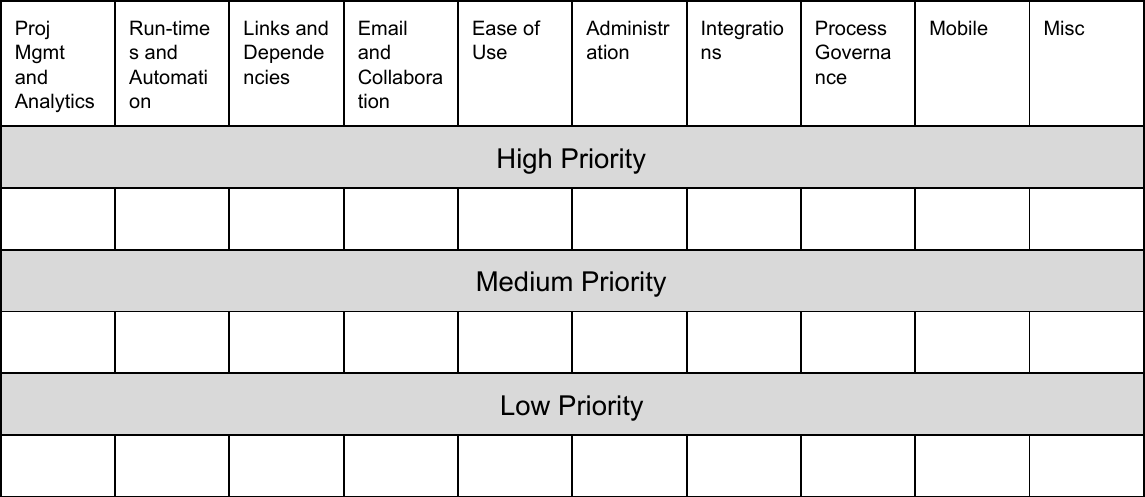
For more clarity, I am going to provide a brief example of a "voting system" that our product development team uses. Their backlog of rough ideas and customer feedback looks exactly like the one that I described above.
So, whenever they receive a customer request for enhancement on our product, a new card is created on the board. If such a card exists, which means a customer has already made that request, they simply add it as a subtask.
Note: The image below is a very rough example of how this can happen in reality.
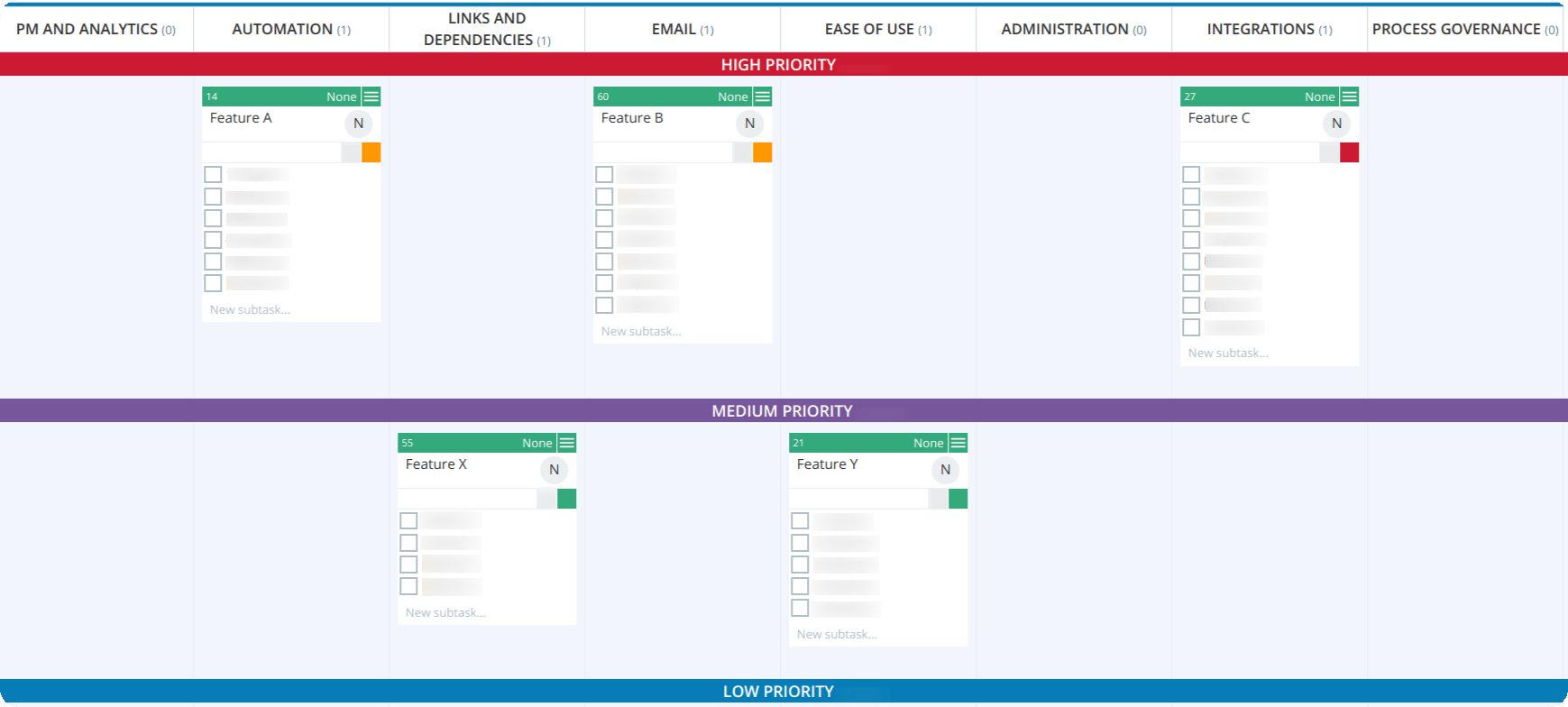
Those cards with more subtasks, go higher in priority for execution because they are clearly in higher demand and value to our customers. To reduce the wasted time of manually arranging the backlog, we have an automation rule set up which counts the subtasks. Whenever they reach a specific number, the card automatically moves to the lane that represents a higher priority.
Prioritizing Using Cost of Delay (CoD)
Another way to prioritize items in the backlog is to use Cost of Delay (CoD).
By definition, that represents the cost that you would accumulate if you delayed a particular job by a certain measure of time (days, weeks, months). Just like the Lean expert Don Reinersten suggests in his book "The Principles of Product Development Flow": "If you only quantify one thing, quantify the cost of delay".
To do that on a basic level, you need to take into account the expected monetary value of a deliverable as well as the time criticality behind it (a fixed deadline for example). Then, you can simply divide the former by the latter to understand which option yields a higher "CD3" (Cost of Delay divided by Duration).
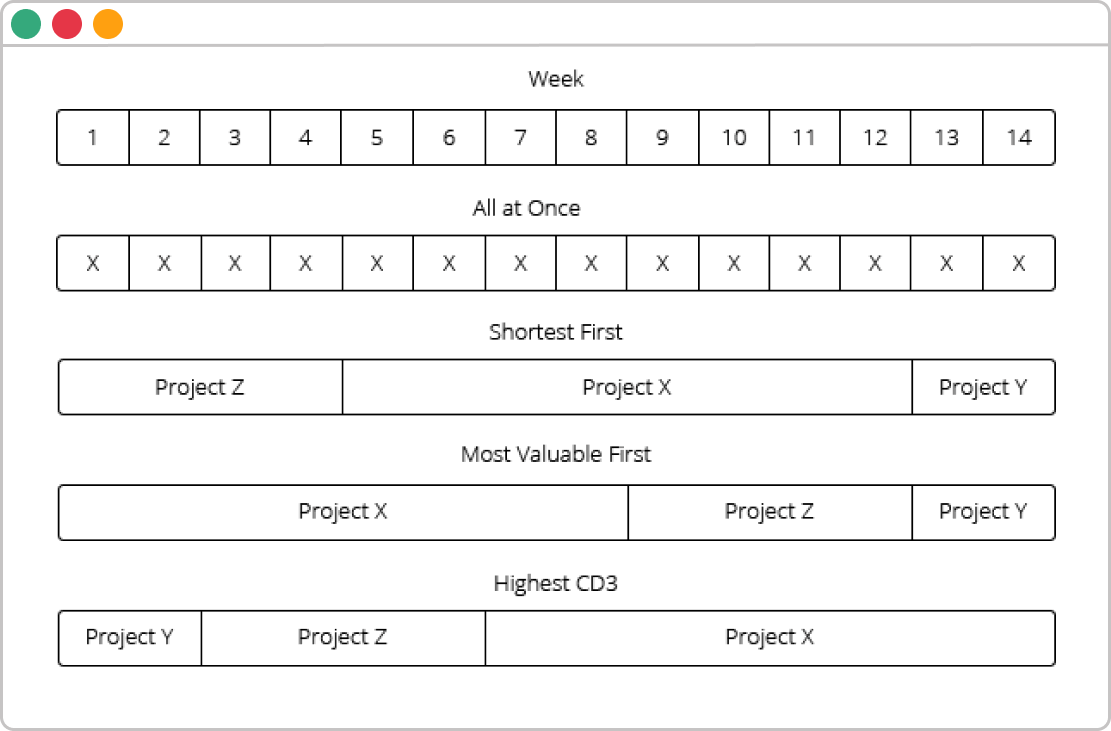
Having that information in mind, you should always prioritize those deliverables with a higher cost of delay above the ones with lower CoD. In case the cost of delay of two deliverables is the same, then you should put higher priority on the one that would take you a shorter amount of time to complete.
In order to learn how to make the right calculations in detail and decide what to prioritize, check out our dedicated article on Cost of Delay (CoD).
Upstream Kanban for Backlog Refinement
Once an idea becomes important enough for realization, you should gather more knowledge about it and decide whether to implement it. That’s why in Kanban, there is an Upstream (Discovery) as well as Downstream (Delivery) process. In reality, the Backlog is the leftmost part of the Discovery process.
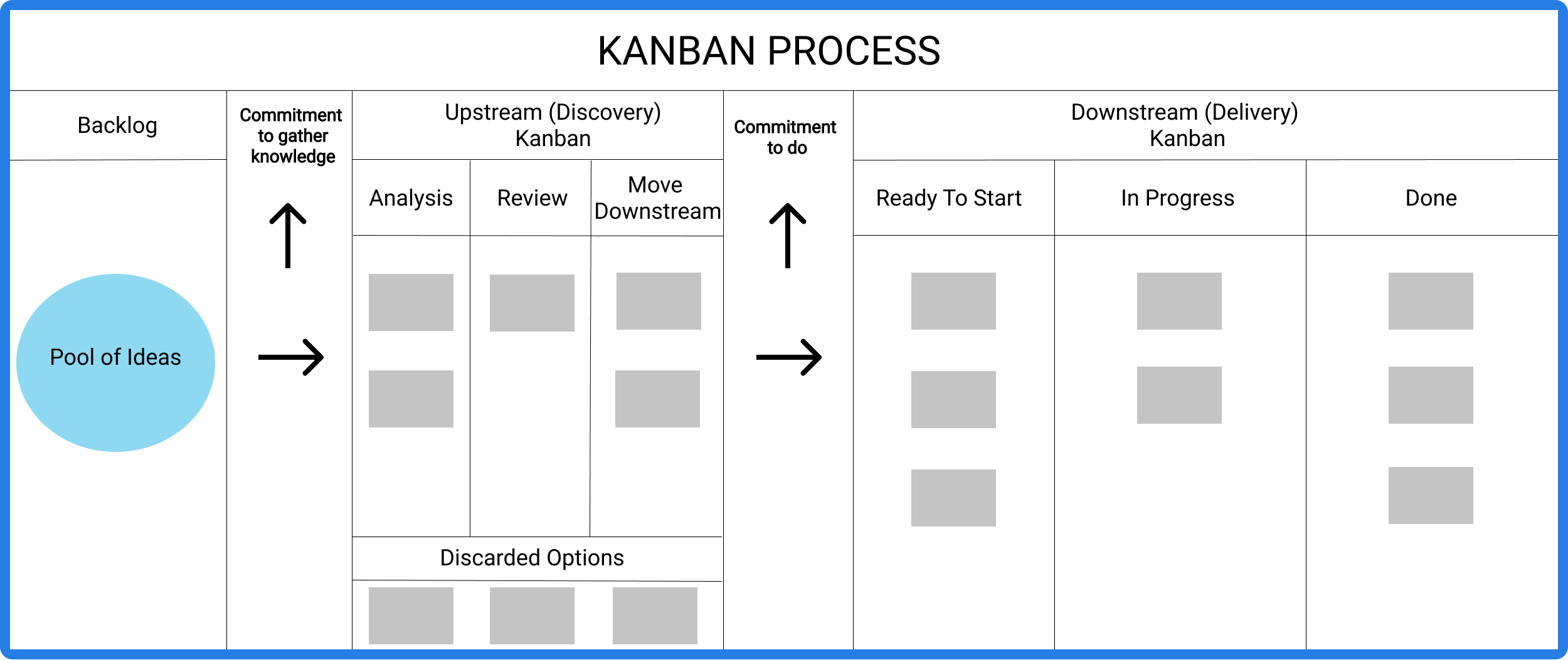
The purpose of Upstream Kanban is to refine the backlog ideas.
There, you can use set-based decision making (known as set based concurrent engineering which first came from Toyota) to evaluate an option for the development of a product or service. This means that you can either discard that option or decide that it’s viable and will eventually produce value to your customers.
If the latter is the case, then you should pull it to Delivery Kanban where the actual work happens. The benefit of the Discovery process is that it reduces the likelihood of abandoning work (and generating waste as a result of it) once there is already a commitment to deliver it to the end-customers.
Upstream Kanban with Kanbanize by Businessmap
Let’s give a short example of an Upstream Kanban implementation with the development of this article. To complete it, we have a dedicated workflow called Content Development on our Marketing board where on the leftmost side, we keep a pool of ideas what content we should produce.
When we pull an idea, we go through an Upstream process (consisting of Conceptualization and Review steps) to gather more information about the content and determine if it’s actually relevant to our target audience. If not, we can adapt it in a way it provides value to our customers or completely discard it.
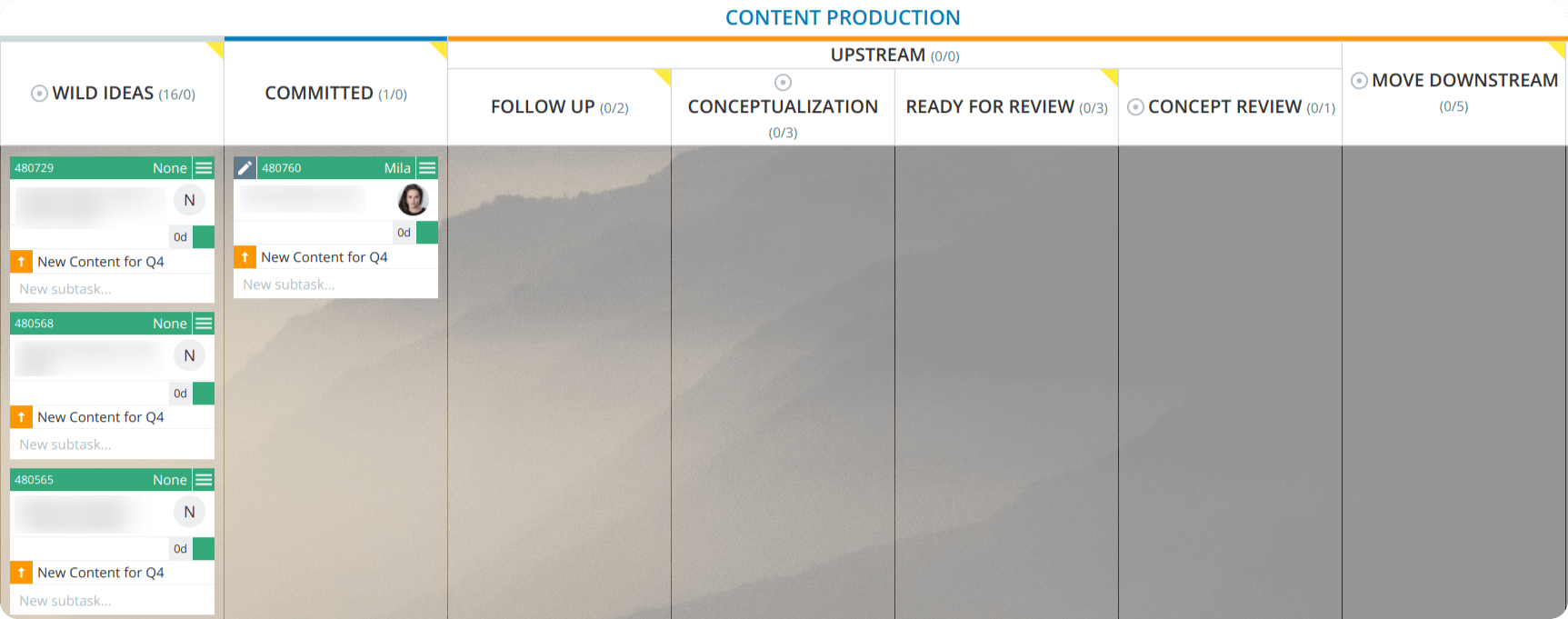
Note how I haven’t mentioned anything about delivery commitment yet? Exactly. You can think of Upstream Kanban as a commitment to only gather knowledge. We are first discovering what it would take us to prepare a valuable content before committing to delivering it to our website. This process maintains our Kanban backlog of refined ideas, reduces the uncertainty of what we are going to deliver and helps us create value with our work every single time.
Using the Backlog at Kanbanize as a Planning Tool
I already gave a few examples of how our product development team prioritizes ideas and customer feedback as well as how our Marketing team uses Upstream Kanban for refinement. However, we also actively use our Kanban backlogs for planning on the team and initiative levels.
For example, on the Marketing board we have a workflow called Cards Workflow where our main tasks flow through. As you can imagine, we have a lot of ideas for different campaigns that we can execute right away. However, some of them are related to projects that we have planned for the last quarter of 2019 while others for the first quarter of 2020.
It’s clear that the former should be executed first. That’s why to better plan what we need to do until the end of the year, while not losing track of the work we need to do later, we divide our backlog on Near Future and Distant Future.
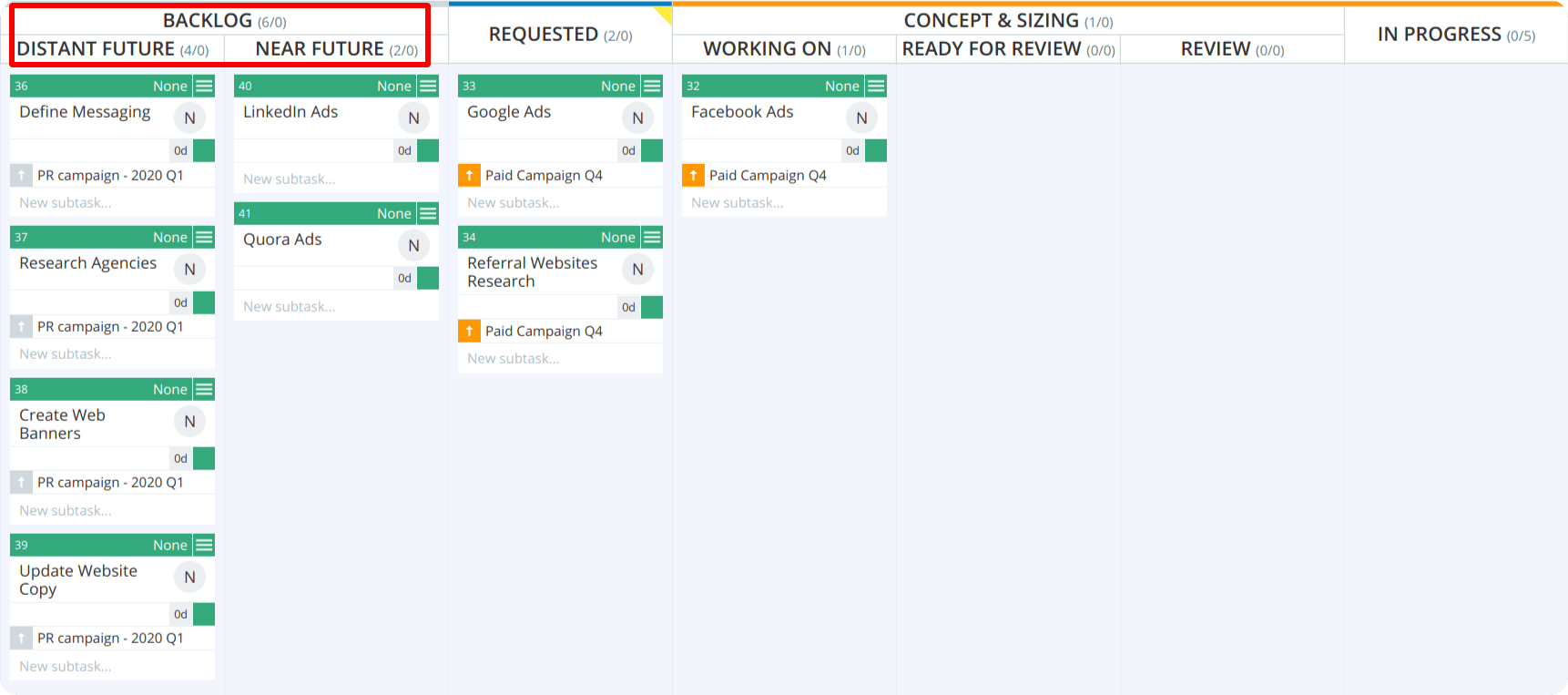
The same idea works on the portfolio level. Our C-level executives plan the Strategic goals of the company on a Hoshin board. There, they divide their Kanban backlog on initiatives to be executed in the quarters of this year as well as more distant goals that we are going to pursue in 2020 and 2021 for example. This keeps us aligned with the short and long-term company vision, which bridges the gap between senior and team-level executives.

At the End of the Day...
The Kanban backlog is a really effective tool for managing ideas and customer feedback. Deciding what to work on next as well as refining our ideas reduces ambiguity and increases the likelihood of providing value to our customers.
So, how do you use your Kanban backlog? Do you implement Upstream Kanban in your processes? Let us know in the comments below.

Nikolay Tsonev
Product Marketing | PMI Agile | SAFe Agilist certified
Nick is passionate about product marketing and business development and is a subject matter expert at Businessmap. With expertise in OKRs, strategy execution, Agile, and Kanban, he continues to drive his interest in continuous improvement. Nick is a PMI Agile and SAFe Agilist certified practitioner.



